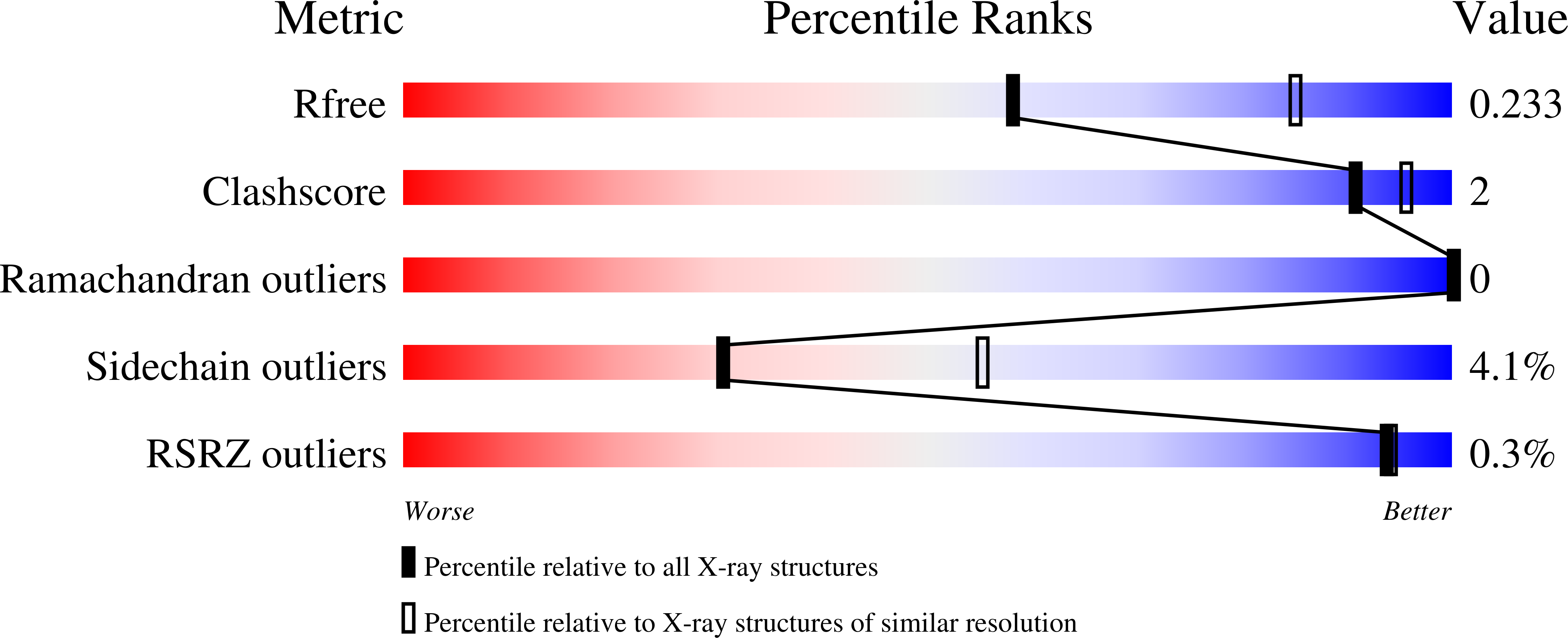Crystal structure of the papain-like protease of MERS coronavirus reveals unusual, potentially druggable active-site features.
Lei, J., Mesters, J.R., Drosten, C., Anemuller, S., Ma, Q., Hilgenfeld, R.(2014) Antiviral Res 109C: 72-82
- PubMed: 24992731
- DOI: https://doi.org/10.1016/j.antiviral.2014.06.011
- Primary Citation of Related Structures:
4P16 - PubMed Abstract:
The Middle-East Respiratory Syndrome coronavirus (MERS-CoV) causes severe acute pneumonia and renal failure. The MERS-CoV papain-like protease (PL(pro)) is a potential target for the development of antiviral drugs. To facilitate these efforts, we determined the three-dimensional structure of the enzyme by X-ray crystallography. The molecule consists of a ubiquitin-like domain and a catalytic core domain. The catalytic domain displays an extended right-hand fold with a zinc ribbon and embraces a solvent-exposed substrate-binding region. The overall structure of the MERS-CoV PL(pro) is similar to that of the corresponding SARS-CoV enzyme, but the architecture of the oxyanion hole and of the S3 as well as the S5 specificity sites differ from the latter. These differences are the likely reason for reduced in vitro peptide hydrolysis and deubiquitinating activities of the MERS-CoV PL(pro), compared to the homologous enzyme from the SARS coronavirus. Introduction of a side-chain capable of oxyanion stabilization through the Leu106Trp mutation greatly enhances the in vitro catalytic activity of the MERS-CoV PL(pro). The unique features observed in the crystal structure of the MERS-CoV PL(pro) should allow the design of antivirals that would not interfere with host ubiquitin-specific proteases.
Organizational Affiliation:
Institute of Biochemistry, Center for Structural and Cell Biology in Medicine, University of Lübeck, Ratzeburger Allee 160, 23538 Lübeck, Germany; German Center for Infection Research (DZIF), Germany.




















